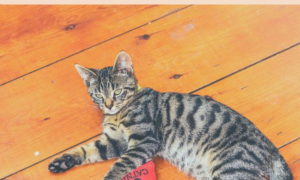Maintaining good cat health means going to the vet periodically, which is never fun for you or your cat. Sometimes there are signs that things just aren’t right and it’s time to look for a new vet. A list originally  posted on speakingforspot.com offers these points to look for to determine when a change is needed:
posted on speakingforspot.com offers these points to look for to determine when a change is needed:
- You or your cat don’t feel comfortable. Cats usually aren’t comfortable during a vet visit, but a good vet is patient and knows ways to calm an anxious cat. If you don’t feel comfortable with the way your vet is interacting with your cat, or your cat has an extreme reaction when the vet enters the room, that’s a sign a change is needed.
- A significant error made while working with your cat. Was there a problem with a recent surgical procedure, or an error with a prescription? These are signs something isn’t working, and it’s time to change vets.
- Your vet isn’t staying current with professional standards. One big change in the last ten years is vaccine intervals. Many vaccines that used to be required annually is now administered every three years (distemper is one example). If your vet is still requiring these vaccines annually, either he/she isn’t keeping current with veterinary standards, or is interested in the revenue the vaccine administration provides. Either way, it’s an indicator it’s time to change vets.
- Your vet does not enlist aid from others in the community. If your vet does not enlist the aid of veterinary specialists or other vets in the area to get other opinions on a difficult case, this signals it’s time to move on. It’s impossible to be expert in every area of veterinary medicine, so calling on other vets in the area that may provide valuable information is a sign a vet is doing everything possible to help a patient.
- Your vet tells you what to do rather than providing options. If your vet doesn’t give you time to ask questions about treatment options, it’s definitely time to seek out another vet. We want the best for our pets, and getting as much information as possible about all the options helps us make the best decision about the treatment. If your vet begins with “You need to”, “If I were you, I would”, or “You should” it’s a sign he/she is trying to curb discussion about treatment options. Move on.





